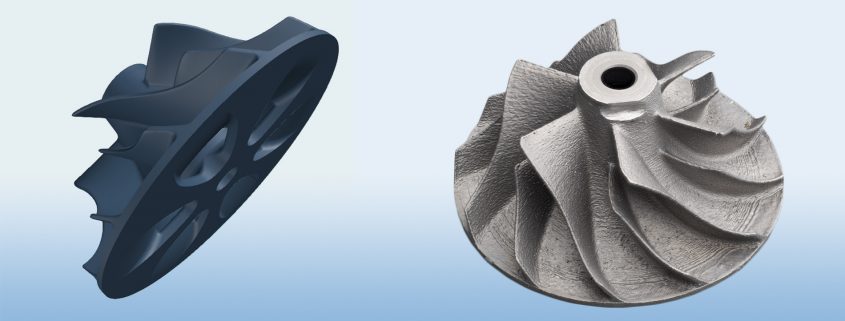NLR recently produced a metal compressor wheel for a microturbine using 3D printing techniques, and successfully tested the compressor wheel at speeds of up to 200,000 revolutions per minute. In doing so, NLR has taken a first step towards 3D-printed rotating components. This is a challenge because these components are subjected to critical loads during use.
NLR measured an existing compressor wheel using a 3D optical scanner, and then redesigned it using special software. The redesign was aimed at ensuring printability and weight reduction rather than any aerodynamic improvements. During the redesign process, calculations were performed to determine the stress levels due to the weight reduction under the expected operating conditions.
The redesigned 3D-printed compressor wheel was produced in a titanium alloy. After being subjected to heat treatment, mechanical finishing and balancing, the wheel was tested in NLR’s microturbine testing facility at rotational speeds of up to 200,000 revolutions per minute and a temperature of approx. 150°C. The system performance of the 3D-printed compressor wheel proved to be comparable to those of the original. NLR has gained useful knowledge about redesigning and 3D-printing an existing rotating component.
With this new 3D-printed compressor wheel, NLR has taken a new step in the field of additive manufacturing. After producing a statically loaded component for the NH-90 helicopter in late 2016, further progress has now been made in applying 3D printing techniques to a rotating component subjected to critical loads. NLR’s Metal Additive Manufacturing Technology Centre (MAMTeC) in Marknesse, the Netherlands, offers advanced 3D scanning and printing capabilities. The centre has a powder bed machine plus testing and modelling capabilities, making it the premier research centre in the Netherlands for the 3D printing of metals.
The use of 3D printing techniques makes it possible to manufacture aircraft components more quickly, and to save on maintenance costs. In addition, 3D printing can contribute to the weight reduction of aircraft, allowing airlines to decrease their fuel consumption and the resulting harmful emissions.



